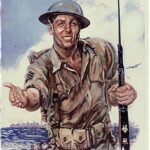
April 29, 2016
21 Ways to Describe Detectives
 For the next few months, I’m sharing word choice suggestions for categories of ideas. That includes:
For the next few months, I’m sharing word choice suggestions for categories of ideas. That includes:
- colorful and original descriptions
- pithy words and phrases
- picture nouns and action verbs
- writing that draws a reader in and addicts them to your voice
I keep a collection of descriptions that have pulled me into the books. I’m fascinated how authors can–in just a few words–put me in the middle of their story and make me want to stay there. This one’s on how to describe detectives.
A note: These are for inspiration only. They can’t be copied because they’ve been pulled directly from an author’s copyrighted manuscript (intellectual property is immediately copyrighted when published).
General
- No one drinks squad room coffee. You pour the stuff, let it sit and then dump it out and start over.
- Run a trace on phones, credit cards
- I don’t think, just follow the information. First thing we learn in PI school
- Send picture of suspect to train depots, airports, toll plazas, bus stations, police stations
- Time would slow down for him now, so he arranged things in his shady nook to get some rest. Real sleep was not an option, not alone in hostile territory, but he could allow himself a light doze, just under the edge of total awareness, with his hand always on a weapon.
- Buchanan’s security net had tracked Colonel Sims to Elmendorf
- Watching where their arms were in relation to their bodies, watching for certain types of backpacks, watching for a gait that might reveal if they were carrying a weapon or an IED. Watching for pale jaws that suggested a newly shaved beard or a woman’s absent touch to her hair, possibly indicating her ill ease at being in public without a hijab for the first time
Detecting
- An accident site speaks to you like a painting. You may not get it the first time, or even the second. Years later, you’ll see something new.
Procedural
- Strategic advantage. You try to hang on to it for as long as you can.
- PROMIS network would tie it all together. The Prosecutors Management Information System
- Every morning when she came out of her apartment I was lurking somewhere out of sight: parked in my car up the street; strolling aimlessly by in the other direction; a payphone on the corner, talking animatedly to my answering machine.
- I was wearing the Browning .9 mm on my hip with a round in the chamber and 13 in the clip. I also had the .357 butt forward on the left side of my belt with six rounds in the cylinder.
- In the late afternoon, he walked the neighborhoods around Grafton Street. He’d spent an hour looking at the dress and mannerisms of the locals, trying to assimilate.
- Satisfied he had not grown a tail…
- No one in the crowd scanned for threats like he did. No one in the crowd had pinpointed the exists and the fit men in the room and the type of glass in the front window. No one in the crowd had taken note of the paucity of law enforcement on the street or the lighting scheme on the back alley. No one in the crowd knew where to sit so no mirror reflection cast his image about the room
- He pulled drawers out on the desk, found a miscellaneous accumulation of pencils, Chapsticks, Scotch tape, a stapler, old glasses, pushpins and other similar office stuff in one; index cards, return-address labels, envelopes and checks for a Wells Fargo bank account in a second
- Checked under the throw rug in the bedroom, under the bed and between the mattress and box spring, and in the towels folded in the closet, and in the pockets of coats. I sifted through sweaters and underwear and socks. I looked in the toes of her shoes, checked behind paintings and mirrors, under couch cushions, behind chairs.
- I looked under the rug and in the toilet tank. I felt inside the water spout in the tub. I used the plier part of my combination tool to take off the shower head. I pulled the stopper from the drain and shined my flashlight in. I shook out the towels, and felt carefully over the shower curtain. I checked the tiles in the shower to make sure there wasn’t a loose one with something hidden behind it. I did the same with the baseboard, and the ceiling moulding. I removed the nut from the top in the sink drain and found a wet soap-and-hair ball. I shined my light into the sink drain. I emptied the wastebasket and put the stuff back in. I smelled the shaving lotion and looked at the bottle against the light. I took the baby powder and then emptied the container into the toilet. I held the shampoo bottle up to the light. I examined the toothpaste tube and the deodorant stick and the shaving cream can. I took the toilet paper off the roll and looked at it carefully from each end. I shined my light between each vane of the radiator. I checked the medicine cabinet.
Undercover Detectives
- The first was that the lie had to be within the realm of plausibility. The second was that the lie had to be framed in such a way that it didn’t appear to be in the self-interest of the person who was telling it.
- On this route, he had seen 2 buses, 18 cars, 63 pedestrians and 2 police vehicles, but he had not seen what he was looking for
- Studied the dress and the mannerisms of the locals, the accessories men carried, the way people covered themselves from the cold or the method by which women would greet one another with a kiss or men would shake hands.
- But there was more to this exercise than that. ** had to be able to pick out others here who did not belong.
Click for the complete list of 69 writer’s themed descriptions.
Most popular collections
51 Great Similes to Spark Imagination
178 Ways to Describe Women’s Clothing
Jacqui Murray is the author of the popular Building a Midshipman, the story of her daughter’s journey from high school to United States Naval Academy. She is the author/editor of over a hundred books on integrating tech into education, adjunct professor of technology in education, webmaster for four blogs, an Amazon Vine Voice book reviewer, a columnist for TeachHUB, Editorial Review Board member for Journal for Computing Teachers, monthly contributor to Today’s Author and a freelance journalist on tech ed topics. You can find her book at her publisher’s website, Structured Learning.





